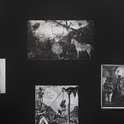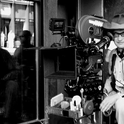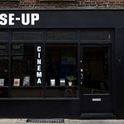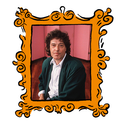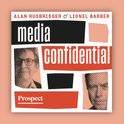It’s Halloween again, the season of the witch. Once you’re done with trick and/or treating, you might want a scary movie to watch. And, right now, there’s no shortage of those.
As has been widely remarked, horror films are enjoying rare popularity at the moment. There’s always been a market for spooky cinema, but over the last decade or so what was previously a cult concern has gone mainstream in a big way, reaching new heights in 2025. Look at Sinners, in which blues musicians batter vampires, a rare blockbuster not based on other material. Or the fairytale-tinged Weapons, popular enough to top the US box office for the entire month of August.
One doesn’t have to much of a cultural theorist to wonder if this might be related to the unedifying era in which we live. It’s often been noted that horror films flourish during dark times. In the 1920s, foreign viewers often remarked how “morbid” and “macabre” German films were; things like Das Cabinet des Dr Caligari (1920) are as indicative of the psychic collapse that country experienced after the First World War as anything painted by Otto Dix.
The word “horror” became associated with the genre at the start of the 1930s. This was when audiences embraced films such as Dracula and Frankenstein (both 1931, the Sinners and Weapons of their day). Polite society was appalled, but polite society was perhaps more insulated from the effects of the Great Depression than the folks lining up to buy tickets.
This correlation, between horrible times and horrible movies, is more easily observed than explained. There was a brief revival during the Second World War, or the 1950s boom inaugurated by Hammer Films that coincided with nuclear-era anxieties—were people looking for stories that reflected the dread they were feeling? The world was a grim place in the 1970s, what with economic shocks, terrorism and that famous “malaise”, but there were films to match the mood, including The Wicker Man (1973), The Texas Chain Saw Massacre (1974) and Halloween (1978). Even as recently as 20 years ago, there seemed to be some mysterious synergy between the then-fashionable “torture p**n” sub-genre (here starred-out because this is a newsletter and we want it to reach your inboxes) of Saw, Hostel, Wolf Creek, etc and the… well, the horrors of Abu Ghraib.
Modern horror leans into its role as social barometer. The genre is more self-aware than ever, with films directly tackling troublesome social issues. The prime example of this is Get Out, which uses genre devices to address the place of people of colour in modern America, cocking a particular snook at wealthy liberals. Other directors have built on this metaphorical capacity: the ultimate horror of films such as Hereditary (2018) or Saint Maud (2019) is mental illness. Feminist concerns are reflected in Raw (2016) and The Substance (2024), while the Iran-set Under The Shadow (2016) features an demon that may or may not be a stand-in for the Ayatollah’s Islamist revolution.
This ambition has led to an unusual degree of critical respectability for a genre traditionally reviled by highbrows. Some of the credit for this should go to A24, the boutique studio behind a succession of upscale, atmospheric horror films that offer a bit more than jump scares and gore (even though they offer those too)—films such as X (2022), The Witch (2015), It Comes at Night (2017) and Midsommar (2019).
But let’s be honest here. It’s not critical respectability powering the current wave. Note that the non-respectable, non-critically acclaimed Terrifier series—there’ve been three so far, doubtless with more to come—is enjoying the same or even greater receipts at the box office as the sort of films that place their concerns closer to the surface. The sales pitch for Terrifier is the creative cruelty undertaken by its villain (a frightening clown), rather than any clever metaphorical reinterpretation of social ills.
Despite the supposed gentrification of the genre, the success of Terrifier or It (another frightening clown) or The Black Phone or the dozens of other efficient, profitable shockers that don’t attract broadsheet coverage suggests the appeal of horror remains as basic—as primal?—as it’s ever been, to see appalling things and feel scared, or at the very least uncomfortable. A24 understands this as much as anyone, emphasising the ghoulish dimensions of their films in the marketing rather than the stuff that excites critics. (Indeed, viewers have sometimes complained that A24’s horror films aren’t as gruesome as the trailers made them appear; they wanted gore, not ideas.)
Whatever form it takes, though, horror today is big business. Bigger than ever, in fact. Where it was once simply a niche beloved by weirdo devotees (hi!), it is now a genuinely mainstream force in ways it’s never been before. There’s a case to be made that horror movies are actually more popular than comic-book flicks now, both in terms of revenue and audience enthusiasm. The taste for superheroes seems to be on the wane, while horror seems ever more bullish.
This tells another story. Some critics theorised that the appeal of Marvel Movies was that they presented all-powerful defenders that could make everything better again, an essentially hopeful position. By contrast, the triumph of horror in 2025 seems to represent a darkening of the mass-audience mood, pointing to greater despair at the state of the world or even something more nihilistic. Put it this way: kids are spending their Friday nights going to see people being tortured and killed, and doing so in sufficient numbers to routinely put those films atop the charts. What does that say about the public temper?
One final point needs to be made: some good, very good and even a few outstanding films have emerged from this current wave. But they’re still not as horrifying as the news. Even genre fans should hope horror goes back to being a niche again as soon as possible.
We live in the age of horror
The time of the superhero is over. In the third decade of the 21st century, we like our entertainment considerably darker
October 30, 2025
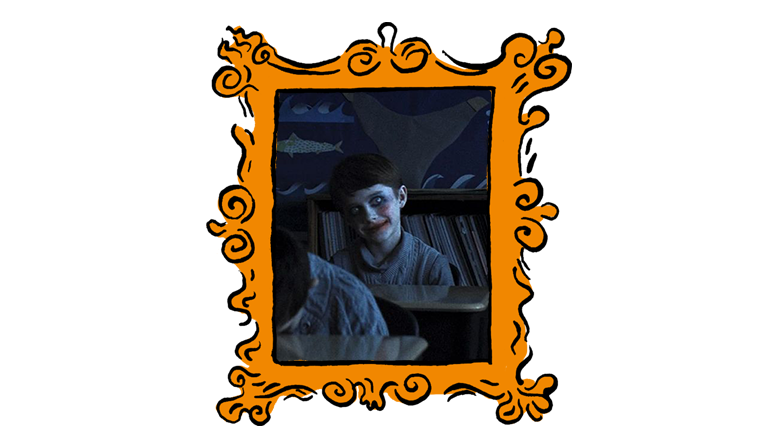
The back of the class is not the place to be in ‘Weapons’. Image: Warner Bros Pictures
